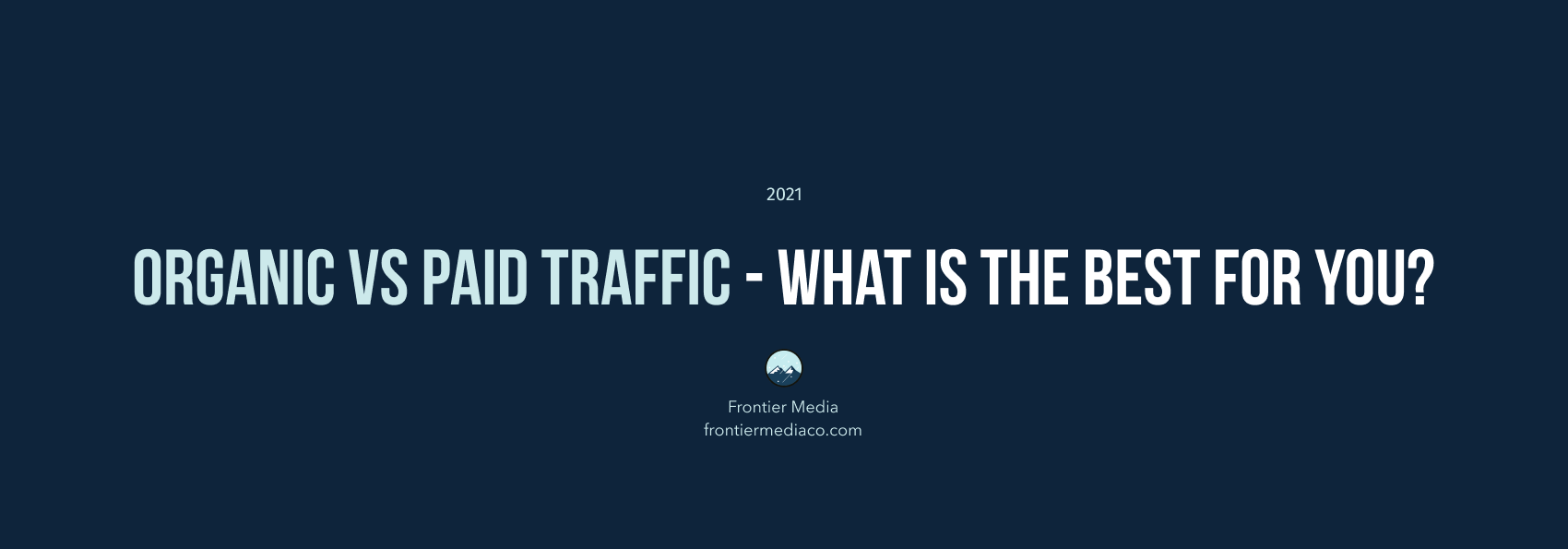Deciding between paid traffic and organic traffic is a decision that can impact your business in the foreseeable future.
People these days who don’t have a budget often have two choose one or the other. The difference between organic traffic and paid traffic in simple terms can be the same as the difference between long-term and short-term growth.
Knowing how complicated starting a business can be, adds a layer of research that you must conduct to ensure your business’s future.
Before deciding what is best for you, let’s talk about what both the traffic sources mean.
What is Paid Traffic?
As the name suggests, paid traffic is the traffic you have to pay to generate. These are ads.
You can generate traffic by advertising your website/ service on other websites that fit your niche. Technically, these campaigns are known as PPC campaigns.
You can show different types of ads on other people’s websites. For example, banner ads, email ads, and many more.
We can achieve a lot via PPC ads and which we will explore later.
What is Organic Traffic?
As the name suggests, organic traffic refers to traffic generated organically, meaning traffic that you didn’t have to pay for.
Traditionally organic traffic has always come through your website, appearing on search results. With the help of SEO (Search Engine Optimization), your website can achieve this too.
SEO requires a lot of consistency, which we will talk about more later. One thing to note is that today due to the emergence of social media, we have more sources to generate organic traffic. Although, SEO remains the best way to generate organic traffic.
Factors That Will Help You Decide Between Organic and Paid Traffic
- Budget – This may be the deciding factor for a lot of businesses out there. Not everyone has millions in their marketing budget. While organic traffic is more of a long-term effort, paid traffic gives you immediate results to evaluate.
- Goals – In your business, your goals are everything. We think goals should come first, and after that, you should decide on a budget. Knowing your goals will make decision-making easier for you. Do you have a sale you want to market to bring in new customers? The answer is PPC ads.
Now, let’s discuss what makes paid traffic a viable choice and what are its shortcomings.

Pros of Paid Traffic –
- It is pay to play. While using ads, you can be sure that you will generate traffic. We are not discussing the quality of the traffic because that would depend on optimization skills. If you are using ads, you will surely generate traffic which is a certainty that is hard to achieve via organic marketing methods.
- Results are Instant. You can start seeing results shortly after publishing your ads. Although there is an initial learning phase for the ad, this wait is nothing compared to publishing new content on the web.
- Easy to Calculate ROI. If you want to evaluate your investment to every penny spent, ads are the way to go. Ad networks like Facebook Ads and many others already have built-in functions like ROAS (Return on Ad Spend) to help you out.
- Targeting. If you are not aware of the targeting options available to you while using ads, I would advise you to check it out. If I had to describe ad targeting in a word, it would be “insane”. You can reach specific people directly from anywhere in the world.
- High Buyer Intent – When people look at an ad, they look at it with the intention of buying. Studies show, 50% of people arriving at a retailer’s site from paid ads are more likely to buy than visitors who came from an organic link.
Cons of Paid Traffic –
- Hard to Build Authority – Using Ads can building authority might not be the best way to go about things. Have people been successful? Yes, but the cost involved is not worth it compared to what you achieve with organic traffic.
- A short term approach. If pay to play is an advantage, it is also a disadvantage. The moment you stop paying, the traffic will stop, which means that you have to keep running ads to generate traffic.
Here is why organic traffic is great and why it might not be the best approach for you.
Pros of Organic Traffic –
- Long-Term Approach – Unlike Paid Traffic, you don’t have to pay for traffic. Instead, you would have to focus on creating content that the audience is searching for. Since you are not paying for traffic, your efforts will continue to translate to traffic even if you stop publishing new content.
- Better Way to Build an Audience – Publishing content on the web and generating traffic organically, help you reach your audience in a more helpful manner.
- Build an Authority – Publishing content helps you reach people who might not be interested in you but are interested in what you are sharing. Sharing meaningful content allows you to build authority in your niche.

Cons
- Takes a Long Time to Show Results – Generating organic traffic is a long term effort, results come in gradually. If you don’t have to wait, then this is not the way to go.
- Not Stong Buyer Intent – People are usually not in the mindset to buy when they look at organic content, while it helps you build an audience, the buyer intent isn’t as strong.
- Lack of Targeting – If you compare the targeting options available to you while using ads then you will be disappointed.
Why Content is the Centrepiece Either Way?
Whether you are publishing organic content or running ads, the quality of your content must be top-notch.
You don’t read an article written poorly, similar to how you don’t click on an ad with a bad copy and graphic.
While you decide between paid and organic traffic, you must keep this in mind.
So, What is best for your business?
We don’t know, you decide!
This is something you need to decide for yourself, we have given you the factors to consider, and now it’s time for you to make a decision.
Here’s a quick recap to help you –
- Know Your Goals.
- Set Your Budget.
- Paid ads deliver faster results, are easy to run and calculate ROI.
- Organic traffic is great to builds authority and is a long term approach.
- Content is the centrepiece in both cases.
We hope this article helps! You can check out our other article on Content Marketing to help you make your decision.
